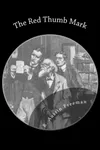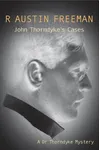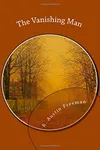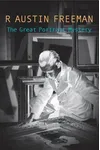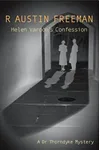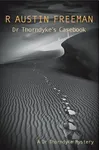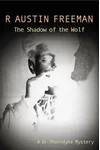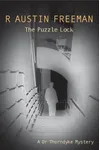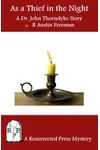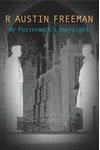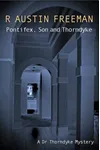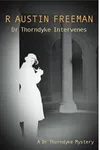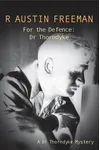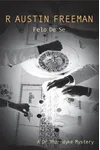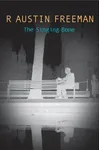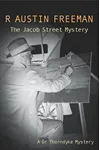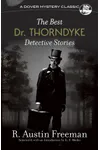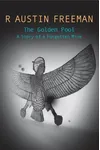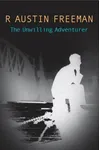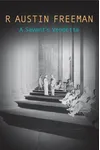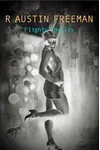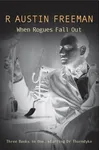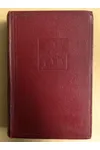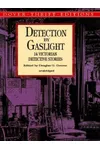Picture a British storyteller who turned the mystery genre upside down with a brilliant detective named Dr. Thorndyke—meet R. Austin Freeman! Born in 1862, Freeman blended his medical expertise with a knack for crafting clever whodunits, inventing the 'inverted detective story' that keeps readers hooked by revealing the culprit first. His tales of science and suspense still captivate mystery lovers today.
Freeman’s life was as fascinating as his stories. From his early days as a colonial surgeon to his prolific writing career, he brought a unique perspective to detective fiction, making Dr. Thorndyke a household name in the Golden Age of crime novels.
The Making of R. Austin Freeman
Born on April 11, 1862, in London’s Soho, Richard Austin Freeman was the youngest son of a tailor. Initially trained as a physician, he practiced medicine in the Gold Coast (now Ghana), where a bout of blackwater fever forced him to return to England in 1891. Unable to secure a steady medical position, Freeman turned to writing, initially collaborating with Dr. John James Pitcairn under the pseudonym Clifford Ashdown. His medical background and curiosity about science shaped his storytelling, leading to the creation of Dr. John Thorndyke, a medico-legal forensic investigator who debuted in 1907.
R. Austin Freeman’s Unforgettable Stories
Freeman’s Dr. Thorndyke series, spanning 21 novels and 40 short stories, redefined detective fiction. His first novel, The Red Thumb Mark (1907), introduced Thorndyke, a doctor-turned-lawyer who solved crimes with meticulous evidence analysis, from thumbprints to toxicology. Unlike Sherlock Holmes’ flair, Thorndyke’s logic was rigorously scientific, reflecting Freeman’s own experiments in his home laboratory.
Freeman’s genius shone in The Singing Bone (1912), a collection featuring his pioneering inverted detective stories. In tales like 'The Case of Oscar Brodski,' readers witness the crime and culprit first, then follow Thorndyke’s clever deductions to catch them. Other notable works include The Eye of Osiris (1911), a gripping tale of a missing Egyptologist, and The Jacob Street Mystery (1942), showcasing Thorndyke’s analytical prowess. Freeman’s clear, unembellished prose and focus on forensic science gave his stories authenticity, blending suspense with intellectual puzzles.
His narratives often explored justice and morality, set against the vibrant backdrop of early 20th-century London. Freeman’s ability to weave arcane scientific details—think tropical medicine or metallurgy—into accessible, thrilling plots made his work stand out, earning praise from figures like Raymond Chandler for their 'gaslight charm.'
Why R. Austin Freeman Matters
Freeman’s invention of the inverted detective story was a game-changer, shifting the focus from 'whodunit' to 'howcatchem.' This format influenced modern crime fiction, inspiring TV shows like Columbo and countless novels. His emphasis on forensic science predated modern CSI-style storytelling, cementing Dr. Thorndyke as the 'Sherlock Holmes of forensics.' Despite battling Parkinson’s disease, Freeman wrote prolifically until his death in 1943, even penning novels in an air-raid shelter during World War II, a testament to his dedication.
His stories, adapted for stage, screen, and radio, continue to resonate with fans of classic mysteries. Freeman’s legacy lies in his ability to marry science and suspense, proving that a good detective story can be both brainy and thrilling.
- Born: April 11, 1862, in London, England
- Key Works: The Red Thumb Mark (1907), The Singing Bone (1912), The Eye of Osiris (1911), The Jacob Street Mystery (1942)
- Notable Achievement: Invented the inverted detective story
- Died: September 28, 1943, in Gravesend, Kent
Ready to unravel a mystery with Dr. Thorndyke? Snag The Singing Bone and dive into R. Austin Freeman’s ingenious world of scientific sleuthing!
